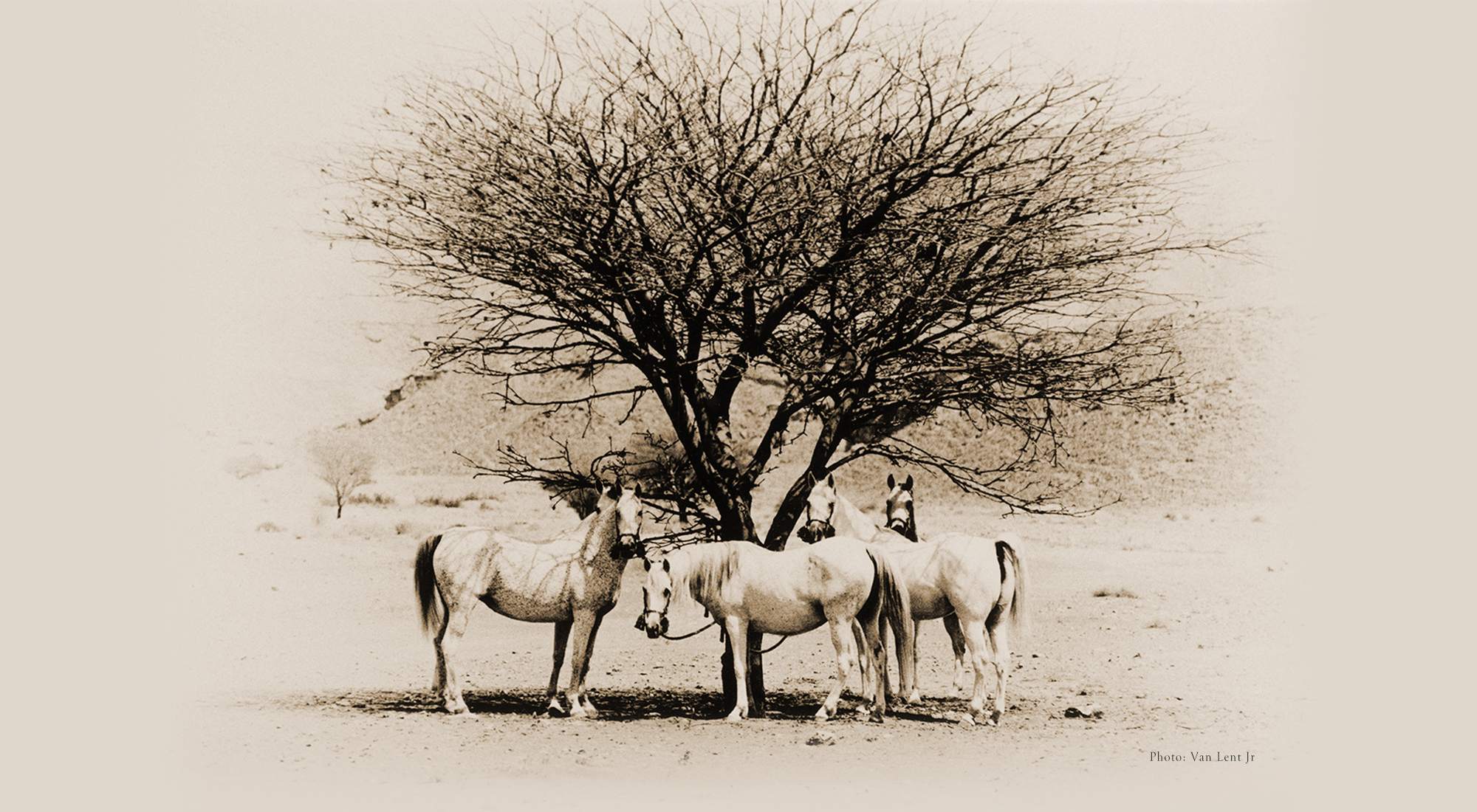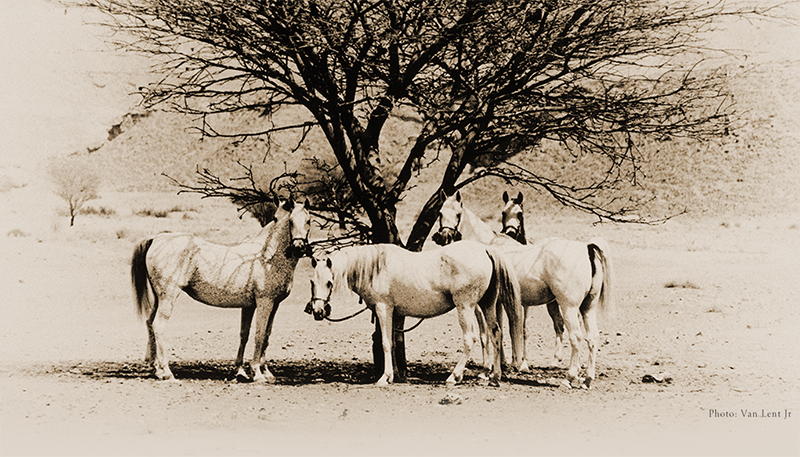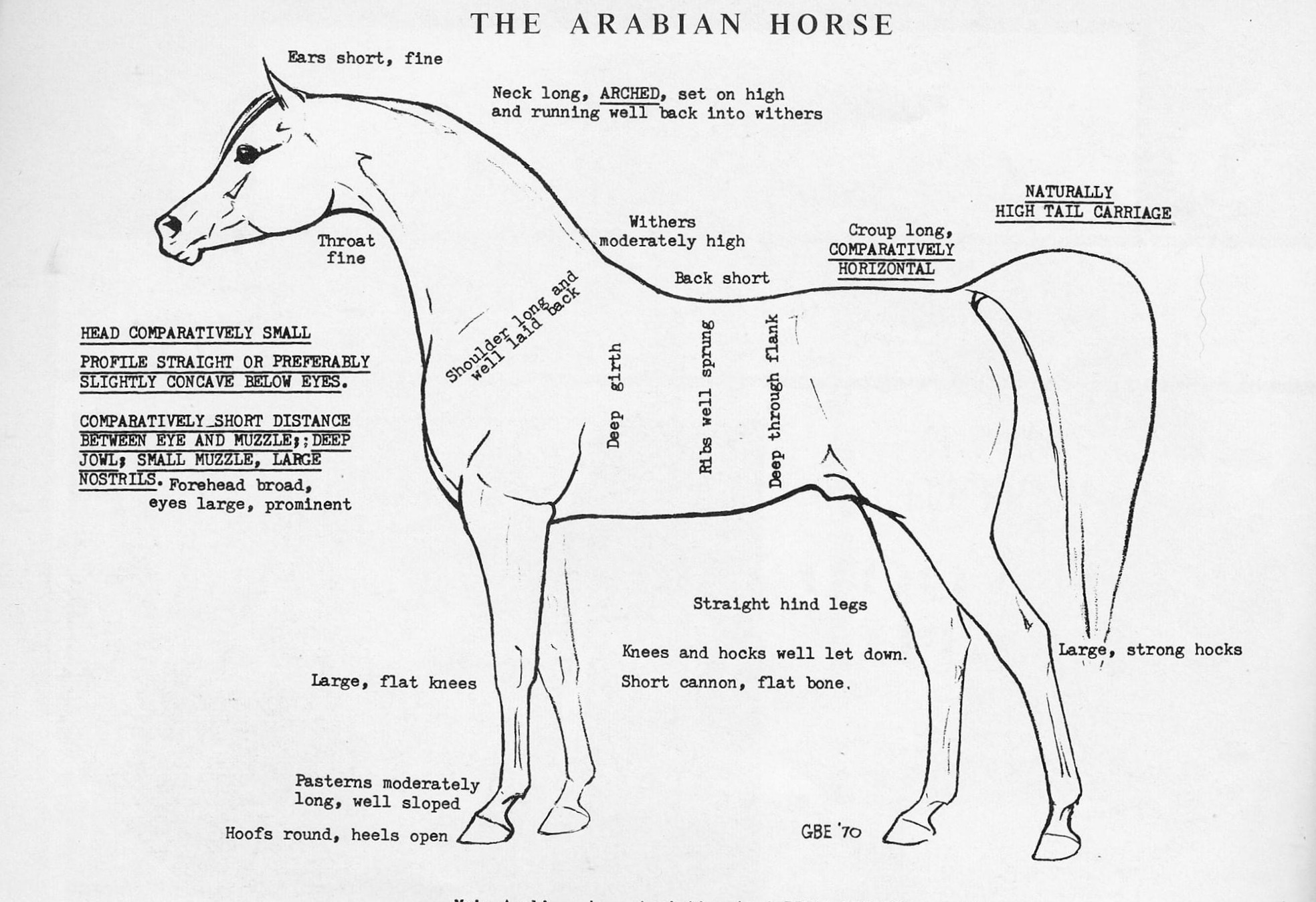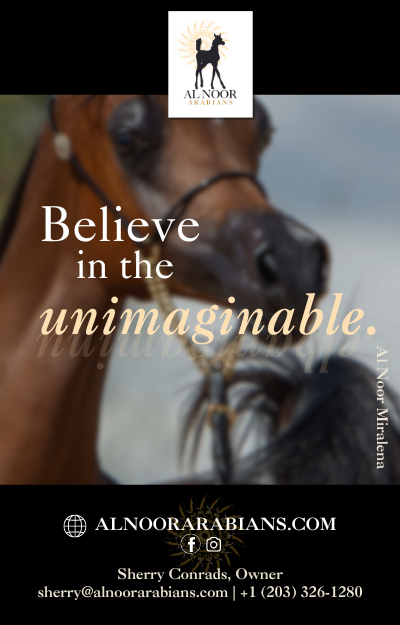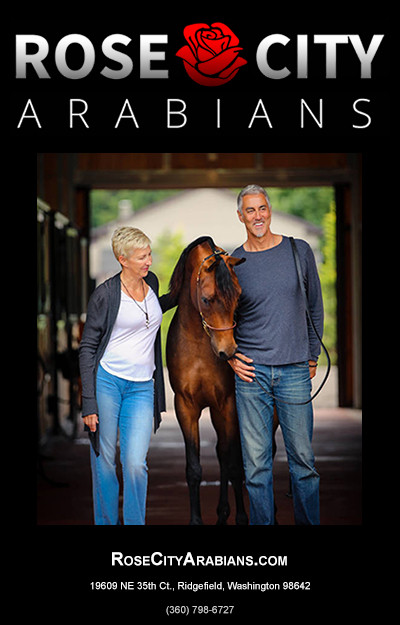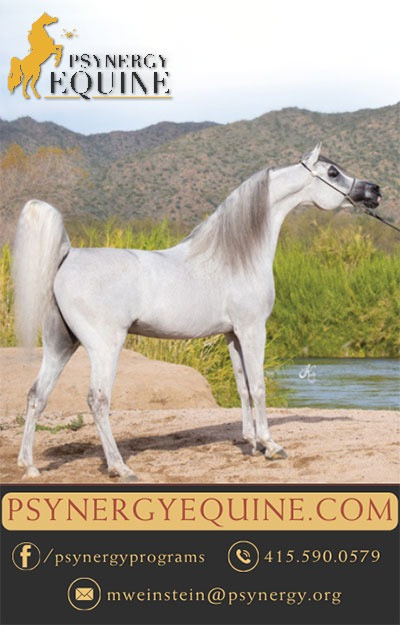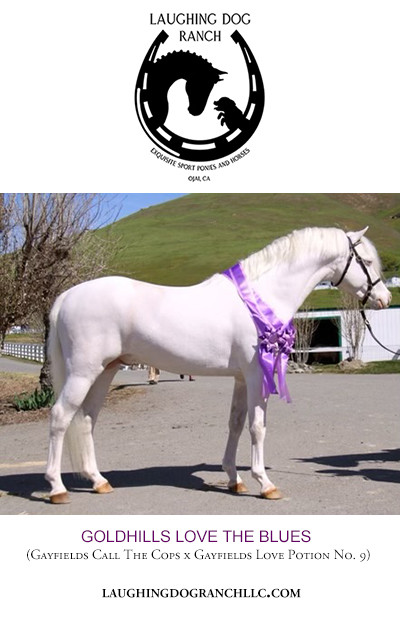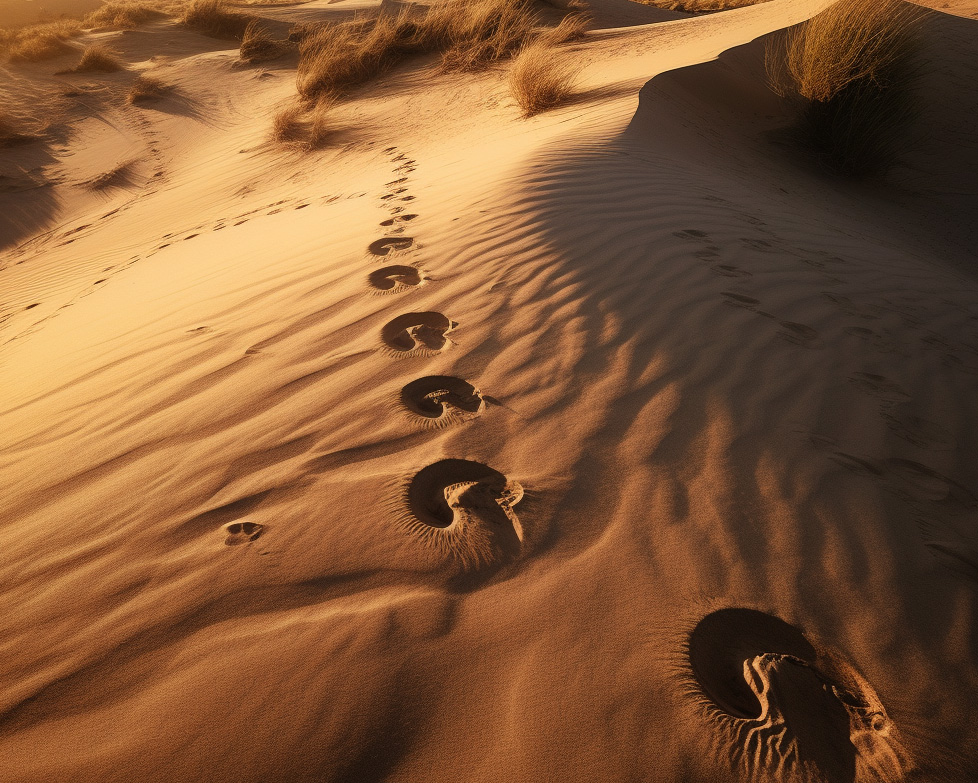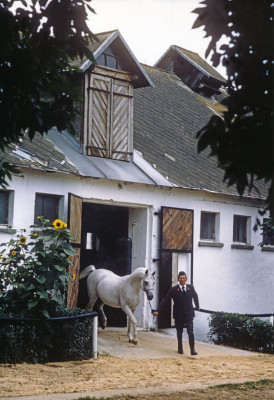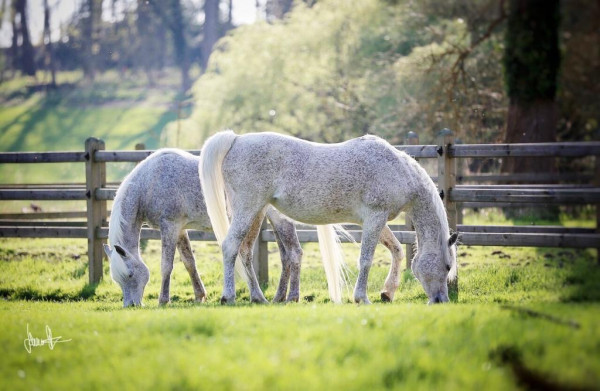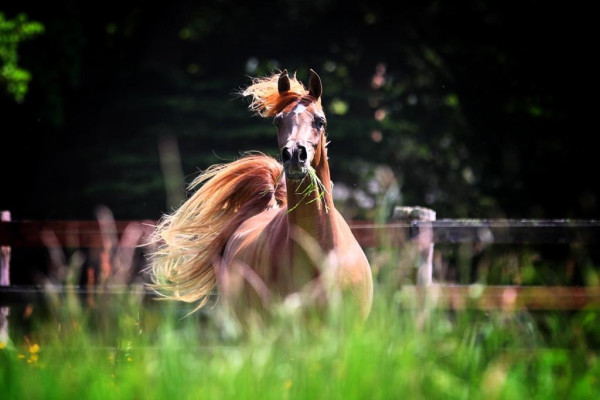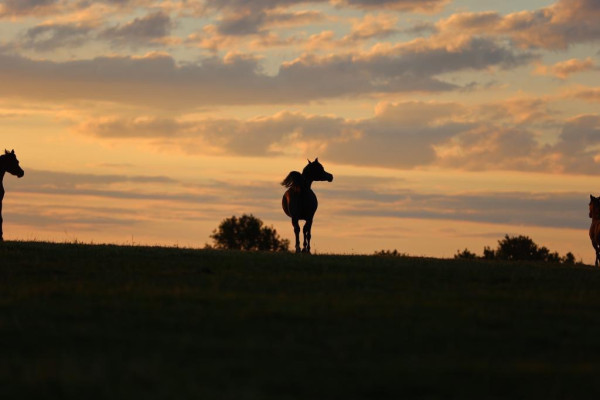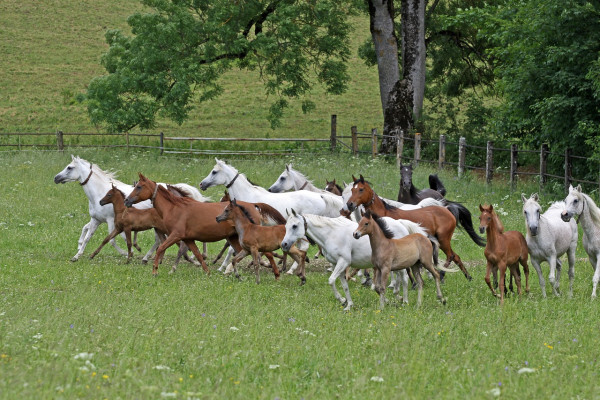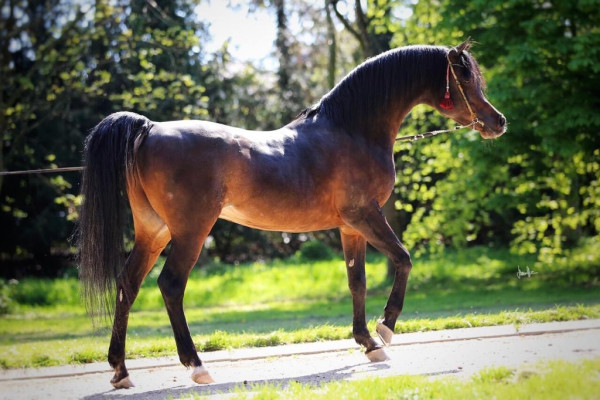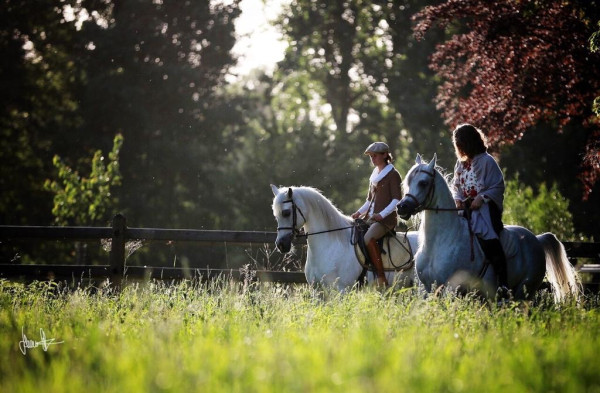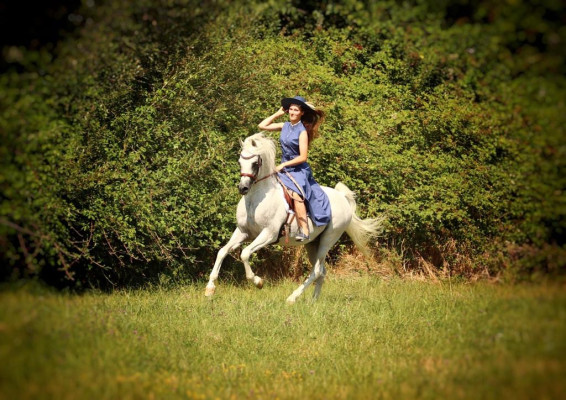Arabian Type — We might know "What" but do we know "Why?"
Not Just A Pretty Face
by Cindy Reich
Breed: A group of usually domesticated animals or plants presumably related by descent from common ancestors and visibly similar in most characteristics.
Characteristics: A special quality or appearance that makes an individual or group different from others.
Type: The characteristics of a group of people or things that set them apart from other people or things, or people, things, or groups that share particular characteristics:
Type is a subject that all Arabian breeders and owners spend a lot of time discussing, breeding for, hoping for, and promoting. Judges are instructed on the importance of type and often expected to quantify the degree of type with a numerical score.
But what is type, really? And how should we reward or penalize a horse for how much type it possesses or lacks? More importantly, why should we reward or penalize various aspects of type?
Over this series – “The Whys of Type”, we will break down the various components of type in the Arabian horse, and examine how these characteristics came to define the breed.

Most people agree that the Arabian has five major characteristics that distinguish it from other breeds and constitute its “type.” These characteristics are: A short head with a “dished” appearance to the face, a short, strong back, a level or nearly level croup, a high set tail that is carried aloft when moving or excited, and a high, arched neck.
These characteristics are what breeders usually want to emphasize in their breeding decisions and what judges are asked to assess in competitions. However, to what degree are these characteristics desired, and again, more importantly, why should these characteristics be important?
Let’s compare the “template” laid out by several international Arabian breed associations, to see if the emphasis on these traits are in accord. I have condensed some of the information as we are only doing a broad view in this article. I will be taking a deeper dive as we progress in this series.
Arabian Horse Association of America
Head ‐ Comparatively small head, profile of head straight or preferably slightly concave below the eyes; small muzzle, large nostrils, extended when in action; large, round, expressive, dark eyes set well apart (glass eyes shall be penalized in Breeding classes); comparatively short distance between eye and muzzle; deep jowls, wide between the branches; small ears (smaller in stallions than mares), thin and well‐shaped, tips curved slightly inward
Neck ‐ long arched neck, set on high and running well back into moderately high withers
Back ‐ short back
Croup ‐ croup comparatively horizontal; Tail ‐ natural high tail carriage. Viewed from rear, tail should be carried straight.
Australian Arabian Horse Society
“The head is a distinctive feature of the Arabian breed. It should be short with a broad forehead and deep circular jowls set wide apart, and tapers to a small, refined muzzle.
The ears are short, pricked and alert with fine edges and well-defined tips curved delicately inwards.
The majority of Arabians exhibit a dish or depression in the profile of the face. The dish is situated about halfway between the poll and the muzzle and varies considerably from almost imperceptible to quite pronounced. It is usually more marked in mares than in stallions.
The neck should be arched and moderately long and in proportion to the body, set high into the shoulders, and rising more steeply from the wither than in other breeds. The curve of the neck behind the poll should match the curve of the well detached pliant throat (gullet).
The body should be capacious with a deep chest of medium width and long, well sprung ribs giving a deep rounded barrel and good depth through the flank. The side view should exhibit the short topline and long underline of a typical saddle horse. The withers should be well developed and higher than the croup.
The croup should be long from point of hip to point of buttock. It should also be long and comparatively horizontal from point of croup to butt of tail. At rest, the tail setting should be level with the back and not with the point of the croup. In motion the croup becomes more horizontal, raising the tail setting. The buttock is set high and projects back well past the point where the tail meets the body.
When the horse moves, the tail is elevated to be carried proudly in a high pronounced arch.”
ECAHO Judge’s instructions
“One of the most distinctive features of the Arabian is its head, which is extremely refined with the bone structure clearly defined. When seen from the side the head appears wedge-shaped, broad across the cheek bone and tapering to a fine “pint-pot” muzzle. The eyes set low in the head are large and of a limpid dark color. It is not a fault to have some white round the eye like a human eye. The nostrils in repose lie parallel to the profile of the face and are capable of real expression. A “dish” in the profile below the eyes is desirable but by no means essential.
The head fits to the neck at an angle of more than 90 degrees, so that it appears to spring out in a natural curve which allows for an open throat line (mitbah), giving the neck an arched appearance at all times. The modelling is clean and not fleshy, there being no appearance of acute angles. Stallions usually have a definite crest and may therefore be a little thicker through the throat.
Length of neck is important, but Arabians generally are not so long in the neck as the Thoroughbred, although its flexibility, high carriage, natural curve, and fine throat give an appearance of length.
The back is quite short and strong though often somewhat longer in a mare. A slight concave line is desirable between the well-defined withers and the loins which spring strongly in a curve to the quarters. Being a riding horse there must be a place for a saddle.
Good length from hip to point of buttock is necessary and also good width across both hips and thighs when seen from behind. The point of croup must not be higher than the withers and the line of the quarters should be nearly horizontal with the tail appearing as a natural extension to this line.
A distinguishing feature of the Arabian is its elevated tail carriage, arching away from the quarter or held like a flag, particularly when the horse is moving or excited. When very excited the Arabian may plume his tail right over his quarters. A slight sideways carriage of the tail is acceptable.”
Arabian Horse Association of South Africa
“Comparatively small head, profile of head straight or preferably slightly concave below the eyes; small muzzle, large nostrils, extended when in action; large, round, expressive, dark eyes set well apart (glass eyes shall be penalized in Breeding classes); comparatively short distance between eye and muzzle; deep jowls, wide between the branches; small ears (smaller in stallions than mares), thin and well-shaped, tips curved slightly inward; long arched neck, set on high and running well back into moderately high wither.
Short back; loins broad and strong; croup comparatively horizontal; natural high tail carriage. Viewed from rear, tail should be carried straight.”
THE PYRAMID SOCIETY STANDARD OF EXCELLENCE
The head is the single most defining characteristic of the Egyptian Arabian horse.
The forehead should be broad, may be flat, or show a slight bulge known as a "jibbah." The Egyptian Arabian head may show a straight, concave, or dished profile, but never convex. The eyes should beset at approximately one-third of the distance between the ears and the muzzle. The jowls should belarge and round, with branches set wide apart; the lower jaw should taper upward toward the refined muzzle and lower lip, completing the impression that the head has a distinct wedge-shape.
The neck should flow from the shoulder into the head with a well defined throatlatch that reflects balance and harmony with the rest of the body of the horse. The neck should suggest a graceful arch, a hallmark of the Egyptian Arabian breed, as it connects through the· throat to the head.
Shortness of back with good muscling is a hallmark of the Arabian breed. Mares may haveslightly longer backs than stallions, but the loin should be broad and strong, providing strength and balance.
The more nearly horizontal croup is preferred over that which is sloped, but some roundness allows more athletic movement. Likewise, an upward tilting croup is not desirable.
The Egyptian Arabian horse is noted for a distinctly high, proud tail carriage. This is natural to the horse and evident even when still but alert and focused. Upon movement the tail iselevated in an arch, and upon excitement or animation, is carried gaily - often flagged in the air. The set of the tail should be high, and the tail should be carried straight when viewed from behind.
Bedouin legend
The Arabian horse should have three things short, three things long, and three things broad.
Short: Back, cannon bones, tail bone
Long: Ears, neck, foreleg (above knee)
Broad: Forehead, nostrils, chest
Not surprisingly, the basics are fairly consistent, with variations from country to country, but nothing that seems too far away from the center. One must consider that breed standards are created by their respective breed organizations. Some are quite detailed (as we will explore in future articles), while others are minimal. Ideally, the breed standard should paint a picture in descriptive terms of what the ideal Arabian should look like. If you want to vet a breed standard, try drawing the animal based on the description. A good breed standard will result in a fairly accurate representation. A minimal standard leads to speculation and the imagination can create some pretty fantastical examples – but not accurate to the evolution of the breed and its function.
That said, why have a breed standard? And how did these five characteristics end up being the most important? Did a bunch of people sit down one day and decide this is what the Arabian horse should look like? Who decides what version of the Arabian horse is the most authentic? In my world, the evolution of the breed and its function should determine the ideal type for the Arabian horse. Breed associations tell us what should look like, but never why. It is only when you understand how these five characteristics came to distinguish the Arabian from all other breeds, that you understand the meaning of type.
Next month we will look at how the Arabian horse’s head evolved be its most distinctive feature – and why the Arabian is much, much more than just a pretty face. It is a face that is a direct result of its original environment and function.


